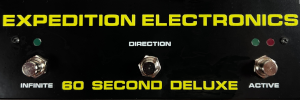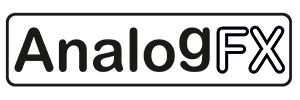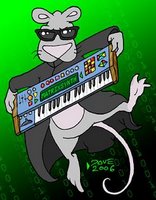Showing posts sorted by date for query Waveform. Sort by relevance Show all posts
Showing posts sorted by date for query Waveform. Sort by relevance Show all posts
Wednesday, December 17, 2025
Tonverk 1.2.0 OS Upgrade
video upload by Elektron
"Tonverk 1.2.0 is here! With some lovely little festive additions to put under the Tonverk tree. We’ve got two new FX to play with, even more options with the existing FX, random mode for the arpeggiator, and further fixes and improvements.
Find out more and download Tonverk OS 1.1.0: https://bit.ly/48T1BjG"
"OS Upgrade: Tonverk OS 1.2.0
We know Grainer, and the 1.1.0 OS that fixed the sync issues, are still fresh on the block, but we had some pretty neat dishes in the oven that didn’t quite make that release. So here is OS 1.2.0, a chance to put a few more little festive additions under the Tonverk tree. We’ve got new effects, even more options with the existing effects, a random mode for the arpeggiator, and some other little additions alongside further fixes and improvements.
New effect: Steel Box Reverb
A third reverb comes to Tonverk, and it’s a whole other flavor. Steel Box Reverb draws on early digital and ’90s plate reverbs, with deliberately wide parameter ranges that let you push sounds from tight metallic rooms to sprawling, resonant spaces. It can clang, bloom, or decay endlessly, making it equally suited to metal can tails or big, characterful ambience.
New effect: Filter Folder
Filter Folder combines wavefolding with filtering and distortion to reshape sound at a more fundamental level. By folding the waveform before it passes through a multimode filter and drive stage, it adds harmonics, grit, and movement that go far beyond traditional filtering. From subtle edge and density to aggressive, overtone-rich transformations, Filter Folder excels at turning simple signals into something far more complex.
More FX availability
If those two additions weren’t enough (for now) we’ve also extended Tonverk’s FX powers in other ways too. Daisy Delay can now be used on all tracks - and Frequency Warper can now be wielded on all audio tracks, bus tracks and mix. Use these two awesome options wherever your echoing, warped heart desires.
Random Arp
Random Arp introduces controlled unpredictability to arpeggiated patterns, reshuffling note order on the fly to generate evolving melodies and unexpected variations.
And more
There’s a few other stocking fillers too. Pattern mute, improved gain reduction and new sidechain sources for the compressor, shorter samples available to use on Grainer, and improved tempo stability when simultaneously receiving clock and large amounts of MIDI data from an external source, such as Octatrack. Plus various other fixes and improvements."
Thursday, December 11, 2025
Absynth 6 by Native Instruments - No talking demo
video upload by ADL-MusicLab
"Hi, everyone!
Here's to you my 'No talking demo' of the stunning Absynth 6 by Native Instruments.
Absynth 6 marks the return of a legendary semi-modular synthesizer. Built for textures that transform and breathe, it invites you to shape sounds that are entirely your own. Deep enough for complex sound design, and intuitive enough for newcomers, it opens up distinctive, living sounds for cinematic cues, ambient soundscapes, and electronic productions.
Absynth has a long, storied history of surreal sound. The strange textures and dreamlike tones return with Absynth 6, the latest in this prestigious line of semi-modular synths.
This version keeps the heart of the hybrid engine you know. It combines subtractive, FM, wavetable, and granular synthesis into one flow that makes unusual sounds feel natural to create. A refreshed interface, a new waveform editor, and an intuitive visual browser make it easier than ever to craft otherworldly soundscapes.
The launch of Absynth 6 is the story of rebirth. It honors the strange beauty that defined the original, while bringing it into a new era with a new suite of tools and accessibility features.
Truly a sound-designer's dream, opening up endless creative possibilities!"
Friday, December 05, 2025
Tiptop Audio Introduces the TRIAX8: An Oscillator like no other
video upload by Tiptop Audio
As always, check with dealers on the right for availability and price.
TipTop TRIAX-8 Polyphonic Thru-Zero FM Oscillator - What is TZFM?
video upload by gattobus
"Here's a quick presentation and audio demo of the new TipTop Audio TRIAX8 Polyphonic Eurorack Oscillator.
00:52 - What is THRU-ZERO FM ?
03:45 - XOR Waveform
05:45 - Music Performance
This video is sponsored by TipTop Audio"


"Meet the TRIAX 8 , an oscillator like no other, featuring 16 analog triangle-core oscillators with full note polyphony and patching. The TRIAX8 is a landmark in synthesis technology, combining true polyphonic patching and full note polyphony with the creative and joyful hands-on workflow of a modular synthesizer. Every function has its own knob, and all modulation inputs are ready for patching with patch cables. Beneath this interface lie 16 true analog oscillators, real circuits built from semiconductors, capacitors, and resistors, each one alive, drifting naturally with temperature and with the magnetic and electric fields they generate. This is the sound of analog: full, warm, organic, and never the same twice.
In this demo, we showcase just a glimpse of what the TRIAX8 is capable of, and how easy it is to design sounds through instant patching. We focus mainly on pads and drones, with a touch of arpeggios. A note about video sound quality:
YouTube plays compressed audio, which significantly affects sound quality. Compared to the original recording, the audio will generally sound muddier and harsher in the highs. However, it still provides a good sense of the character and tone of the demoed device.
Patch Overview for this video: For modulation, we used the OCTOLFO to randomly patching LFO signals into the TRIAX 8’s CV inputs. The audio output was routed through the OCTPASS 24 dB low-pass filter and then into the OCTOGAIN. From the OCTOGAIN’s stereo outputs, the sound was sent to the Z-DSP, where some patches feature reverb or delay from the Z-DSP. For control, we played notes from Ableton through the Octopus, or used G-Mode sequencing on the Octopus and NerdSeq."
Check with dealers on the right for availability and price.
Thursday, December 04, 2025
Gene CHROMAGENE - First Look
video upload by Gene Synths





"Pre-order at http://genesynths.com
Sound recorded directly from the back of the synth (No added effects / eq / reverb etc).
CHROMAGENE is an all analog, stereo polyphonic synthesizer with two halves. One half is an 8 voice 2 VCO polysynth where every oscillator can be tuned independently or transposed together, the other half is a polysynth that uses the Ring Modulated output of each pair of oscillators as its signal source.
This wide range of sound sources along with two analog filters and an on-board sequencer give Chromagene a wide palette of tones and textures.
Inspired by the earliest polysynths of the 1970s, it is fully polyphonic
(all 16 notes can be played at the same time), can be tuned to any scale or tuning,
is multi-timbral and touch sensitive.
The instruments key contacts are Immersion Gold plated and non-corrosive.
At the top, there are 16 tuning controls for the 8 pairs of oscillators. Each tuning control has a momentary pitch bend touch sensor below, so you can articulate each note individually. The top row of tuning controls (VCO-1) also shifts the oscillator below it, but the second row of tuning controls are independent. This allows you to preserve the tonal relationship by using the top tuning controls, or change it by detuning VCO-2.
These tuning controls allow you to tune the 8 pairs of oscillators to any scale, from a standard equal tuning to any microtonal, non-western or even unison tuning.
VCO-1 has a Pulse Width Modulation control and each set of oscillators has a master tuning control and an individual LFO control.
The 8 analog ring modulators take the VCO signals and multiply their output. VCO-2 is converted to a triangle pre-ring-modulator so that the ring modulated signal is fully continuous and not binary like pseudo-ring-modulators in some synths. This means you can create virtually any waveform by carefully tuning the input VCOs, and an endless variety of tones can be generated for each note individually.
The two filters, which can be panned from mono to full stereo using the panning control, are all-analog all-transistor low-pass VCFs, with individual cutoff, resonance and envelope-mod controls. The envelope amount controls go from negative (inverted) to positive. VCF-1 has mixer controls for VCO-1 and 2, and VCF-2, which is for the Ring modulated notes, has LFO cutoff modulation and Panning.
The 16 independent envelope generators have Attack, Decay, Sustain and Release controls.
The sequencer can be internally or externally clocked. Custom sequencer configurations can be set up, get in touch.
The synthesizer is built into a hand-made wood case.
Specifications
16 note polyphonic, multi-timbral
16 voltage controlled oscillators, tuneable to any scale
8 ring modulators (true ring mod, not xor)
All analog. Class A audio path
2x transistor filters with cutoff, resonance, attack (env mod +/-), lfo/panning controls
16 VC Envelope Generators (Attack, Decay, Sustain, Release)
24 VC Amplifiers (1 per oscillator + 1 per ring modulator)
Oscillator LFO modulation
Pulse Width modulation
Touch-sensitive pitch bends
16-note gold plated touch sensitive keyboard
In built sequencer, internally or externally clocked
2.1mm 9v centre negative power input
Can run on an external standard type 9v battery (please ask for a special adaptor cable if required)
2x 6.35mm (1/4 inch) audio output
6.35mm (1/4 inch) external clock input
27 x 22 x 5 cm
£1,055 special introductory price.
NOTE This is a pre-order. Delivery will be approximately one month after you pre-order (date will be confirmed via email).
Synth uses a standard guitar pedal type power supply (9v tip negative), I no longer include the power supply as I receive orders from lots of different countries, but I am happy to advise on power supply models."
Tuesday, December 02, 2025
DELIA Macro Oscillator Mode Update Melbourne Instruments Hybrid Analog Polysynth
video upload by Melbourne Instruments
"Introducing the powerful new Macro Oscillator Mode firmware update for DELIA, Melbourne Instruments' motorized hybrid polysynth. This major enhancement adds 45 synthesis waveform models using open-source code from Émilie Gillet’s Mutable Instruments Braids, one of the most celebrated Eurorack synth modules.
This new mode dramatically expands Delia’s sonic capabilities, unlocking a new world of synthesis, from classic analog textures to cutting-edge digital experimentation. Powered by Delia’s innovative architecture, the new Macro Oscillator Mode delivers an incredibly versatile hands-on sound design experience unlike any other.
This video demonstrates just some of the 50 new presets, exploring the sonic possibilities of the new Macro Oscillator.
Each waveform model is shaped by two expressive parameters, Timbre and Color, adapted from the original Braids module. These controls affect multiple tonal dimensions simultaneously, producing evolving, complex, and musically responsive sounds.
Macro Oscillator Mode introduces a diverse palette of waveform types, including:
• classic analog VCO emulation
• additive and digital synthesis
• vowel/formant synthesis
• 2-operator FM
• simulation of string and wind instruments
• wavetable synthesis with smooth XY interpolation
• filtered/colored/pitched noise
• granular synthesis
• electronic drum sound simulation
0:00 Intro
0:50 Let's explore new presets
0:56 Lifeforce Stack
1:10 Science Fact
1:28 4UP
1:43 Glass Diver
1:57 Well Strung
2:12 Trance 8000
2:27 Bass Folder 1
2:43 Rez Kick Pattern
2:53 Spectral Keys
3:12 Destination Pad
3:34 Rough Talker
3:51 Poly Wah
4:14 RND Walk
4:29 Cycling Flutter
4:46 Big House
4:59 Macromash Wobbler
5:12 Mario Arp
5:24 56k Modem
5:38 Ultimate Trance
The Macro Oscillator firmware update is available now for all Delia users, download here:
https://www.melbourneinstruments.com/...
Learn more about Delia:
https://www.melbourneinstruments.com/...
Discover more at Melbourne Instruments
https://www.melbourneinstruments.com/"
Friday, November 28, 2025
Weston HV 1 Hybrid Oscillator (sound.report english)
video upload by Heiner Kruse - The Green Man(TGM) - sound.report
Timestamps:
00:00-02:33 Intro
02:33-04:20 Digital Osc
04:20-05:40 Aux CV-In Modulation WT Cluster
05:40-08:33 Scale and organize Modulation
08:33-11:10 Fold Algorithms and FM
11:10-15:09 Where’s the beef - + WT Chord Mode
HV1 is an oscillator that brings the best of both the analog and digital worlds: At the core is a super stable, great-tracking, analog triangle core VCO. The triangle is fed into a digital phase shifter, which outputs a phase-shifted triangle and morphed wavetable waveform. The phase-shifted triangle is also transformed into a complementary set of sawtooth, pulse, and sine waveforms using analog circuitry. The digital waveforms are both 16-bit / 150kHz resolution, with available anti-aliasing, making them right at home with the analog waveforms.
Features:
+ Detune ability to make HV1 act like 2 separate, parallel oscillators
+ True linear Phase Modulation & Through-Zero FM
+ 16-way morphing wavetable output with ability to load WaveEdit format and Serum files from SD card
+ Auxiliary CV assignable to wavefolding and bitcrushing effects
+ Built-In Tuner Function
+ Great tracking and stability with 8 octave switch
Thursday, November 27, 2025
Meet Waldorf's New Protein Wavetable Synthesizer
video uploads by WaldorfMusicChannel
Check with dealers on the right on availability and price.
Playlist:
1. Waldorf Protein Trailer
2. Waldorf Protein Sounddemo
3. Protein - Deep Dive - Tutorial with CTO Rolf Wöhrmann
User Videos:
Playlist:
1. New Wavetable Synth: WALDORF PROTEIN - Sound Demo (no talking) - Limbic Bits
2. Waldorf Protein Demo (no talking) - New Wavetable Synth from Waldorf! - Bonedo Synthesizers
3. Waldorf Protein - Sounds, walkthrough and sound design - Martin Stürtzer






Protein is an affordable and compact 8 voice polyphonic Wavetable synthesizer based on the original Microwave 1 ASIC oscillators combined with modern features of Iridium heritage like the sophisticated arpeggiator, step sequencer, chord mode, effects and more. Protein links back to the very beginnings of Waldorfs instrument makings but interprets the original ideas in a contemporary and surprising way.
With handy dimensions of 252 × 170 × 48 mm (including controls) and a weight of 0.9 kg, the Protein is a true powerhouse packed into a compact and portable new form factor that stands as the first statement of a new upcoming product line.
Specifications
Oscillators
• Two oscillators based on unique Waldorf Microwave ASIC chip.
• Internally running with 250 kHz sampling rate to match original ASIC sampling rate.
• Modeling of digital-to-analog converters for each voice (DAC).
• Unique digital noise generator based on ASIC technology.
Wavetables
• All original wavetables of Microwave 1 based on the original coding and bit-identical to original.
• Including algorithmic and speech wavetables.
• Beautiful recreation of 8-bit quantization and aliasing.
• Full waveform catalogue of original Microwave.
Filter
• Faithful modeling of CEM analogue filters.
• Adjustable de-calibration of cutoff and resonance to model detuned hardware.
• Cutoff and resonance modulations.
• Additional „Dirty“ types: Noise, crackle, click, geiger and bursts.
Modulation
• 3 Envelopes
• 2 LFOs with tempo sync and sample & hold
• 8 slot modulation matrix
• Poly-aftertouch capable
• MPE modulation sources.
Effects
• Two effect slots
• Reverb, Delay, Chorus, Phaser, Flanger, Drive, EQ, Compressor, Tremolo
Voices
• 8 voice polyphony
• 4 timbral layers
• Stacked, round robin and MIDI-split layer-modes.
• Mono & Legato modes
Performance features
• Advanced Arpeggiator
• Step-sequencer with up to 32 steps
• Chord & Scale modes
• MPE Compatible
• MIDI CC Learn
Patches
• Over 150 factory patches
• Capacity of 250 patch memory slots
• Category filter for patch list
• Import- and export of patches via MIDI Sysex
Connections
• Stereo Audio Out with 6.35 mm jacks with optional mono and TRS stereo connections
• Headphones mini TRS output
• DIN MIDI IN & Out, mini-TRS Type A (two adapters to DIN MIDI sockets included)
• USB Type C for power supply and USB MIDI connection
• Firmware updates via USB
Overall
• Sturdy metal front plate on a colorful plastic case
• Dimensions: 252 mm wide by 170 mm depth by 48 mm height (including controls)
• Weight: 0.9 kg
• Power Supply via USB (not in the box)
What’s In the Box?
• Waldorf Protein Synthesizer
• Two MIDI adapters: mini TRS to DIN sockets
• USB C to C cable
• Printed Quick Start Guide
Tuesday, November 11, 2025
Make Noise Shared System | Ambient
video upload by Akihiko Matsumoto
"The Unpredictable Logic of Sound: Inside the Make Noise Sample Pack
Every patch on a Make Noise system is a small act of discovery. It does not begin with a plan, but with curiosity. The machine invites you to think in voltages, to listen to circuits as if they were alive. Out of that dialogue between control and chance, something unmistakably organic emerges.
Product link:
https://akihikomatsumoto.sellfy.store...
The Make Noise Modular Synth Sample Pack ver.7.5 was recorded entirely with the Shared System, Strega, and 0-Coast. Every waveform was shaped by hand, without presets, without automation. Each modulation, cross-feedback, and timing drift was allowed to evolve freely until it found its own balance.
Monday, November 10, 2025
Synthesizing waveforms with a frequency divider - a sequel
video upload by organfairy
"I show how it sounds at 4:17 and play it with a keyboard at 5:50
Winter is getting closer so this is the time of year when I start building things. The first of my projects is a revisit to an old idea of synthesizing waveforms with a frequency divider. This time the waveform in question is a sine wave and some other waveforms derived from it.
The old idea is here: • Synthesizing waveforms with a frequency di... [below]
The project is quite a bit more complicated than the previous 'digital' waveform synthesizer as the sine wave is very..... well....wavy, as there are no straight lines like there is in the triangle and sawtooth waves. Therefore I had to take a different approach using a couple of 74LS138 3-8 decoders and an awfull lot of resistors.
The music is my attempt at playing something relaxing on my Wersi Prisma DX-5 organ."
Synthesizing waveforms with a frequency divider
video upload 8 years ago by organfairy
"The demo starts at 4:15.
The normal approach to generating waveforms is to start with a sawtooth wave and then fold it into a triangle wave and schmitt trigger it into a square wave. But it is also possible to synthesize the waveforms by means of a frequency divider and some logic gates. Off course the generated waveforms will be somewhat 'edgy' but that can probably be filtered out and some people might even find it usefull.
The music is something I made back in 2005 on the homemade synthesizers I had then. It's not the best piece I have made but I am still willing to take responsability for it :-)"
Saturday, November 08, 2025
Oddment ODD-1 Build Update & Demos
video upload by oddment
Demos
video uploads by oddment
Playlist:
1. ODD-1 Overview: Playheads
For a long time now we have tried to live by the words of the great Michael Bolton from the movie Office Space, "why should I change when he's the one who sucks?" But language evolves, and unfortunately, the word “grok” has taken on associations that are problematic. Oddment has evolved too. Starting from one quirky product idea, in 3 years we have grown and are now ready for manufacturing and fulfillment of this product, with ambition to make it the first among many. So with much consternation, we have decided to drop the name groc. When we thought about a new name, we thought that what we have is a little unusual, perhaps a little outside the norm...you might even call it, the ODD-1. This is the first in a series of videos to show all of the ODD-1's functions in more detail. In this one we show off half of the encoders that control the granular synthesis engine - the PLAYHEADS function. Here you can control the level, starting point, tuning (aka pitch adjustment) and playback speed for up to 4 different granular playheads. The auxiliary functions available on the touch screen introduce random variability in different ways.2. ODD-1 Overview: Grains
This is the second in a series of videos to show all of the ODD-1's functions in more detail. In this one we show off the second half of encoders that control the granular synthesis engine - the GRAINS function. Here you can control the size, spacing, left-right placement, and grain window shape. Each control also has a related function, introducing grain size variability, spacing jitter, binaural scatter, and a front-back bias for the window shape. The auxiliary functions available on the touch screen control a bandpass filter that can be randomized per grain and adjust whether grain size is regulated in the source sample or in the output signal, which can have a big impact on sound characteristics.3. ODD-1 Overview: 03 Envelopes & Time Path
This is the third in a series of videos to show all of the ODD-1's functions in more detail. In this one we show off the ENVELOPES function. Here you can control the note amplitude envelope and timing, access 3 envelopes that can be used as modulation sources, and use our unique TIME PATH feature to dynamically adapt the playback speed.4. ODD-1 Overview 04: Sample
This is the fourth in a series of videos to show all of the ODD-1's functions in more detail. In this one we show off the SAMPLE function. Here you can choose a sample from the factory library or user-uploaded samples, control the playback mode and the section available for granulation, play and hold notes, set loop points and interact with pitch, tempo and channel information of the sample. We also show the auto pitch and tempo alignment features.5. ODD-1 Overview 05: LFOs, Macros, Patching
This is the fifth in a series of videos to show all of the ODD-1's functions in more detail. In this one we show off the LFOs, Macros and how to create modulation connections. There are 4 LFOs, 3 Envelopes, 4 Macros (assignable knobs), 4 Control inputs and MIDI information that can all act as modulation sources. Any parameter on the device is a parameter destination. Unlimited connections are made by holding down a destination parameter and then pressing or twisting a modulation source.6. ODD-1 Overview 06: Filters, Saturation, Echoes
This is the sixth in a series of videos to show all of the ODD-1's functions in more detail. In this one we show off the Filters, Saturation and Echoes modules. Two filters and two saturation modules per voice, both with multiple types of processing and modulatable parameters, allow for transformation beyond the granular engine. Two echoes sections with filtering and distortion in the feedback loop and fully modulatable parameters make ODD1 worthwhile just as a modular effects rack!7. ODD-1 Overview: 07 Layers
This is the seventh in a series of videos to show all of the ODD-1's functions in more detail. In this one we show the dual Layer functionality. Essentially the entire system is duplicated so the ODD-1 is like having a dual modular systems, each with a polyphonic granular engine feeding two filters and two non-linear processors per voice, with 3 envelopes, 1 time path, 4 LFOs, 4 Macros and a independent modulation matrix per layer. In these examples we also remind that granular can easily do subtractive-style synthesis when using a basic waveform as the source sample.8. ODD-1 Overview 08: Reverb & System
The final video in our eight-part series on the ODD-1's functions focuses on the upper-left row where we have global volume, system-level reverb and can work with banks of patches.And from their newsletter:
The reverb is a classic matrix-style parametric reverb. Think of it like a whole set of interacting delay units with slowly modulating delay times. Ok now that you have that in mind, that's it, that's what it is. It sounds sweet.
If two layers of modulating, granular goodness with a fantastic reverb on top wasn't enough, how do banks of patches to store every twist and connection sound?
What’s in a name?

 For a while now we have tried to live by the words of the great Michael Bolton from the movie Office Space, "why should I change when he's the one who sucks?"
For a while now we have tried to live by the words of the great Michael Bolton from the movie Office Space, "why should I change when he's the one who sucks?"But language evolves, and unfortunately, the word “grok” has taken on associations that are problematic.
Oddment has evolved too. Starting from one quirky product idea, we have grown in three years and are now ready for manufacturing and fulfillment of this product, with ambition to make it the first among many. And with much consternation, we have decided to drop the name groc.
When we thought about a new name, we thought that what we have is a little unusual, perhaps a little outside the norm...you might even call it, the ODD-1.
And we plan to keep that off-beat attitude. We hope that brightly-colored friends, ODD-2 and ODD-3, will be along to join ODD-1 after not too long.
Build Updates
We have a lot of exciting progress to report since the last time I wrote. Hop over to our YouTube channel to check out a build update video and some in-depth functionality demos.
We debugged and fixed several problems with the circuit board including the power-up, line input and output, and noise on the control signal inputs.
We got several bids from contract manufacturers in the U.S. and around the world and selected Soldered, based in the E.U. They came highly recommended, and we think their experience will be a huge asset as we go into production.
We worked with Martyna Alexander to tweak the graphic design of the front and back panel. We are thrilled with the updates, including our new company and product logos.
We have first iterations of our custom firmware, enabling full functionality of the device and full USB connectivity to a host computer.
We have completed first versions of the software that include all audio, MIDI and system functionality we intend to support for the release. After many months of playing and testing we re-organized a few functions to expand both the number of concurrent grain “playheads”, and to support banks of patches intended for convenient switching and management in live performance.
What’s Next?
Sunday, November 02, 2025
Serge’s 1979 ÷NCOM - It Compares, Counts, Waits, Fires and It Always Rises
video upload by Cinematic Laboratory
"I bought the #Serge #NCOM in the blind because a) it's the work of a living legend, b) I had no idea what it did, and c) after reading the manual and looking on YouTube I still had no idea how to use it in real life music.
The ÷NCOM is short for pulse divider (by N steps), a comparator (gate goes high where +IN is higher than -IN) and last but not least, a staircase CV is raised one semitone when the compare goes high and the max steps N is not reached. So now you know, and just like me, it still remains a mystery how it can play a role in modular music.
÷NCOM is from 1979, and quantized CV was rare, especially when it's derived from any two compared voltages. It's using two CMOS chips, but only 5 of 8 bits were used (step 0 to 31 = 32 values). So is it early digital? Yes, but without a CPU or code and state of the art precision - for 1979. Is it still relevant in 2025? I am not sure how many voltage comparators are around in eurorack, and you probably never needed one. A staircase CV waveform is simply a matter of running a ramp through a quantizer, and you may be able to use an END of RAMP event on a Maths clone. The ÷NCOM circuit is often used for rhythmic patches, and the staircase is super useful to make synchronized ramps you can use to open a filter or wavefolder. Not to mention arpeggios. It's the opposite of high-tech, it's low tech. A circuit you need to learn, discover and find use for. It was special in 1979, and today it's part of the joy of owning a true Serge module that can always do more than you think."
Roland SH-3
Note: links to listings are affiliate links for which the site may be compensated.
via this Reverb listing

 "A special early synth from Roland in overall great functional condition, with two exceptions note below. Cosmetically the control panel and keyboard area are in nice shape, but the case is pretty beat up, with bad latches, missing metal piping on one side, bent piping on the other side, and a missing power cord door. According to the previous owner, this unit actually went out on tour with a pop band in the 70's, and it shows. As you probably know, the SH-3 gave way to the more common SH-3A, with the most noticeable change being the switch from the SH-3's diode ladder filter to the the SH-3A's transistor ladder filter.
"A special early synth from Roland in overall great functional condition, with two exceptions note below. Cosmetically the control panel and keyboard area are in nice shape, but the case is pretty beat up, with bad latches, missing metal piping on one side, bent piping on the other side, and a missing power cord door. According to the previous owner, this unit actually went out on tour with a pop band in the 70's, and it shows. As you probably know, the SH-3 gave way to the more common SH-3A, with the most noticeable change being the switch from the SH-3's diode ladder filter to the the SH-3A's transistor ladder filter.
I've thoroughly tested all functions, pots, sliders, and jacks and here are the two functional issues I've observed:
The output and headphone jacks are scratchy and presumably need to be cleaned. It's easy to get an output cable or headphones seated and working, however you may have to twist the plugs in the jacks or reinsert them to get a good contact.
There is some bleed-through from the square/sine LFO that's present in the audio path, most noticeable at quieter volumes or at higher registers. It's not difficult to set up a sound where the bleed-through is either not noticeable or barely noticeable, particularly with everything running loud and with lower waveforms engaged. I have access to another SH-3 that has the same problem (but worse), so I suspect this may be a problem that Roland engineered out of later the SH-3A circuitry, but I can't be sure. Regardless, this is something you may want to attend to at some point should you find it bothersome.
In addition, the 8' "chorus" setting on this and the other SH-3 I've played is noticeably more intense than the SH-3A's I've played, so I suspect this is another feature that Roland tweaked when shifting to the SH-3A circuits.
I recently put $730 into having the synth partially serviced by a noted synth tech, which included:
Fixing an issue whereby the waveform sliders were interacting with each other and significant bleed-through of some waveforms was present.
Cleaning the keyboard and eliminating some squirrely notes and double triggering that had been present.
Replacing some capacitors.
Better securing base of the power cable.
Cleaning a scratchy sider.
So in selling this I'm mostly trying to break-even on those repairs, plus make a little to cover Reverb's fees."
via this Reverb listing

 "A special early synth from Roland in overall great functional condition, with two exceptions note below. Cosmetically the control panel and keyboard area are in nice shape, but the case is pretty beat up, with bad latches, missing metal piping on one side, bent piping on the other side, and a missing power cord door. According to the previous owner, this unit actually went out on tour with a pop band in the 70's, and it shows. As you probably know, the SH-3 gave way to the more common SH-3A, with the most noticeable change being the switch from the SH-3's diode ladder filter to the the SH-3A's transistor ladder filter.
"A special early synth from Roland in overall great functional condition, with two exceptions note below. Cosmetically the control panel and keyboard area are in nice shape, but the case is pretty beat up, with bad latches, missing metal piping on one side, bent piping on the other side, and a missing power cord door. According to the previous owner, this unit actually went out on tour with a pop band in the 70's, and it shows. As you probably know, the SH-3 gave way to the more common SH-3A, with the most noticeable change being the switch from the SH-3's diode ladder filter to the the SH-3A's transistor ladder filter.I've thoroughly tested all functions, pots, sliders, and jacks and here are the two functional issues I've observed:
The output and headphone jacks are scratchy and presumably need to be cleaned. It's easy to get an output cable or headphones seated and working, however you may have to twist the plugs in the jacks or reinsert them to get a good contact.
There is some bleed-through from the square/sine LFO that's present in the audio path, most noticeable at quieter volumes or at higher registers. It's not difficult to set up a sound where the bleed-through is either not noticeable or barely noticeable, particularly with everything running loud and with lower waveforms engaged. I have access to another SH-3 that has the same problem (but worse), so I suspect this may be a problem that Roland engineered out of later the SH-3A circuitry, but I can't be sure. Regardless, this is something you may want to attend to at some point should you find it bothersome.
In addition, the 8' "chorus" setting on this and the other SH-3 I've played is noticeably more intense than the SH-3A's I've played, so I suspect this is another feature that Roland tweaked when shifting to the SH-3A circuits.
I recently put $730 into having the synth partially serviced by a noted synth tech, which included:
Fixing an issue whereby the waveform sliders were interacting with each other and significant bleed-through of some waveforms was present.
Cleaning the keyboard and eliminating some squirrely notes and double triggering that had been present.
Replacing some capacitors.
Better securing base of the power cable.
Cleaning a scratchy sider.
So in selling this I'm mostly trying to break-even on those repairs, plus make a little to cover Reverb's fees."
Saturday, October 25, 2025
Evolving Riddle-4
video upload by Memetune Studio
"Yesterday a new part of the riddle arrived in the post - a beautiful Ensoniq SD1!
The SD1 is a Transwave Rompler workstation from 1990
Did you know that Ensoniq founder Bob Yannes invented the Rompler as we know it (and also the SID chip)? The very first one was called the ESQ1 and came out in 1986, the year before the Roland D50, and then all the other ones from Korg, Yamaha, Kawai, Emu, Alesis, and Kurzweil, each quickly developing their own digital rom chips. Actually Bob used single cycle waveforms stored in rom, but the basic structure and concept of the ESQ1 is what became the rompler. It had 3 simple rom-based VCOs that could be layered and sent through an analog filter. It is a wonderful, epoch defining synth - totally underrated IMO
It was enhanced and repackaged as the SQ80 in 1988 as a fully realised Rompler with more memory for the read-only samples
Their follow up was the VFX which added Transwave synthesis - a bit like the PPG wavetable idea where you can move through the waveform and modulate it. However the VFX had some reliability issues and was replaced a year later by the SD1 which also added a sequencer, and more voices and memory
And this is what we have here - mixed in with the other synths - Quadrasynth, TG33, Waldorf Microwave2 and the Roland JV1080
The reverbs are the Lexicon 224X and the Quantum Room Simulator
There is one part of the riddle left to make - I'll try and work on it tomorrow. Then I will release them all as an album - 'Evolving Riddles' by Benge 😀"
PeacockMedia Announcement of e-ther 'Advance', plus re-recording of a track using the new instrument
video upload by MIDI IN
"in which I talk about the features of the new e-ther, including quantisation, its own screen with selection of options on the device, display of the nearest note. As per the original e-ther it has MIDI out over USB or TRS (adaptable to traditional 5-pin DIN) and audio with selectable waveform.
0:00 Intro and announcement
0:25 quantisation
1:06 screen and on-device menu system
1:23 compatibility with classic e-ther - continuous mode
1:55 demo of quantisation to chromatic scale
2:42 display of nearest or target note
3:09 range
3:27 vibrato
3:45 scales / modes
4:16 connectivity
5:20 the track
e-ther's home page (for classic e-ther and the new Advance):
https://peacockmedia.software/e-ther"
Friday, October 24, 2025
Minuit SOLSTICE
video upload by DATABROTH
"Read my full review here: https://www.databroth.com/blog/solsti..."
00:00 Wavetables
01:43 Foley
03:30 Piano
04:18 Glitch
Turn any sample into an explorable landscape.
Solstice makes any sample into a unique, playable map, revealing hidden textures within your sounds. Made with ambient, experimental, and aleatoric music in mind, but versatile enough for any genre.
60 factory samples + 65 factory presets
Solstice comes with factory samples and presets, categorized and tagged. Filter by mode, style, or favorites. Every preset remembers its exact map position, ready to play.
Import your own samples
Drop your own samples in Solstice to generate their unique geography. Bright textures find their neighbours, transients drift to the edges, sustained tones form dense regions. Every imported sample is stored in user library and instantly accessible.
Sunday, October 19, 2025
Korg SB-100 Synthe-Bass SN 750076
Note: links to listings are affiliate links for which the site may be compensated.
via this Reverb listing
"I bought this from analogia.pl (i.e., Maciej Polak, check out his album 1977!) in 2022, serviced and converted to North American power. This synth is a little limited, but it sounds great and the portability can't be beat. It also has two features that (as far as I know) are unique to this model among early Korgs: the "bender" buttons and the "Phaser" waveform. As far as I can tell "Phaser" is a very nicely dialed-in pulse width modulation that sounds especially nice in the lower registers.
No major issues in testing, but two notes:
The output jack was a little intermittent when I started testing, but after working a 1/4" plug in and out of it the signal is solid. Guessing it was a little dirty and could eventually use a cleaning if you're handy. The "Traveller" slider is a little stiff around the center of its travel. All audio passes great, so this is really a "feel" thing and something I've also noticed on some (but not all) other early Korgs. In great cosmetic shape overall, but there are many little blemishes and signs of wear, which I tried my best to capture in the photos."
via this Reverb listing
"I bought this from analogia.pl (i.e., Maciej Polak, check out his album 1977!) in 2022, serviced and converted to North American power. This synth is a little limited, but it sounds great and the portability can't be beat. It also has two features that (as far as I know) are unique to this model among early Korgs: the "bender" buttons and the "Phaser" waveform. As far as I can tell "Phaser" is a very nicely dialed-in pulse width modulation that sounds especially nice in the lower registers.
No major issues in testing, but two notes:
The output jack was a little intermittent when I started testing, but after working a 1/4" plug in and out of it the signal is solid. Guessing it was a little dirty and could eventually use a cleaning if you're handy. The "Traveller" slider is a little stiff around the center of its travel. All audio passes great, so this is really a "feel" thing and something I've also noticed on some (but not all) other early Korgs. In great cosmetic shape overall, but there are many little blemishes and signs of wear, which I tried my best to capture in the photos."
Friday, October 17, 2025
Similis - self sequenced
video upload by DecadeBridge
"Similis is a lo-fi synth that has several different patches. Here it is set to run a random sequence over a major or minor scale. This preset can be switched between 1 or 2 oscillators, each playing a random note independent of each other.
Pot A/CV in A sets the root note.
Pot B/CV in B sets the range of notes of the chosen scale.
Pot C/CV in C sets the rate of the sequencer (controlled using an envelope generator in this example)
Switch A sets the waveform (Sine, Saw or Square)
Switch B has 3 different settings (Stop the sequencer playback on its current note, run the sequencer, run the sequencer and add an additional synth voice.)
Switch C sets the scale."
https://decadebridge.etsy.com/uk/
Similis - Detune
video upload by DecadeBridge
"Similis is a lo-fi/chiptune style synth consisting of several different presets.
This Similis patch stacks 3 oscillators and detunes them against each other.
Pot A/CV in A controls the root note.
Pot B/CV in B controls the detune of the other 2 oscillators.
Pot C/CV in C controls the level of the 2 additional oscillators.
The root note pitch is being controlled by a random scale from Pam's Pro Workout.
Here an envelope generator is controlling the level of the detuned oscillators through CV in C.
Switches A B and C change each oscillators waveform (sine, saw, square)"
Thursday, October 16, 2025
Minimal Electronic w/ Prophet-10, Moog One, : Arcadia 2025-10-16 by atnr
video upload by atnr
"A piece created with @SequentialLLC Prophet-10, @MoogSynthesizers Moog One, @NordKeyboards Nord Lead, and @YamahaSynthsOfficial CP-88 — a work of minimal music built from overlapping sequenced phrases that gradually evolve in tone and texture.
All synthesizers are played via MIDI sequences from Ableton Live.
On the Prophet-10, the filter cutoff and resonance are manually adjusted, with the output processed through the @strymon blueSky for reverb.
The Moog One’s EG Amount and waveform Mix parameters are manipulated during playback.
The Nord Lead is processed through the @gfisys Specular Tempus for rich reverb.
At the end of the piece, a deep reverb is added across the entire mix using @ValhallaDSP Valhalla Shimmer in the DAW."
Wednesday, October 15, 2025
Moog MuSonics Sonic V 1971/72 - Original SN 30
Note: links to listings are affiliate links for which the site may be compensated.
via this Reverb listing
"All original parts and finish. Works perfectly. Only missing 3 slider covers on master and X/Y waveform generator slides. Slides work perfectly."
via this Reverb listing
"All original parts and finish. Works perfectly. Only missing 3 slider covers on master and X/Y waveform generator slides. Slides work perfectly."
Thursday, October 09, 2025
10/9/25 Pasco Scientific 9301 & 9302 + Yamaha EM-100
video upload by Cfpp0
"10/9/25 Pasco Scientific 9301 & 9302 + Yamaha EM-100
Some lowpass filtration on the Waveform Analyzer. The left 9301 dual function generator goes from DSB to FM to Gate. The spring reverb is the internal tank on the Yamaha EM-100 mixer."
NEXT PAGE
HOME
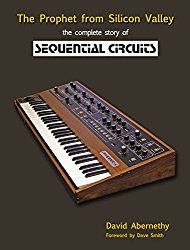
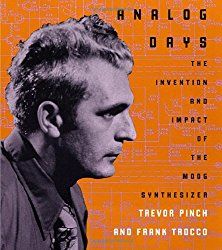
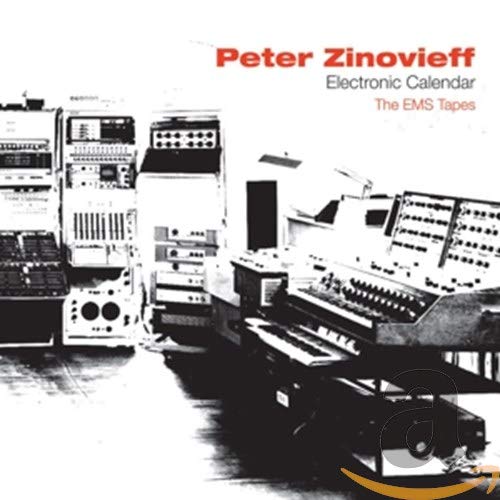
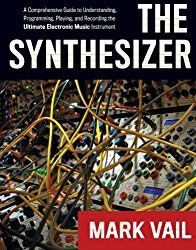

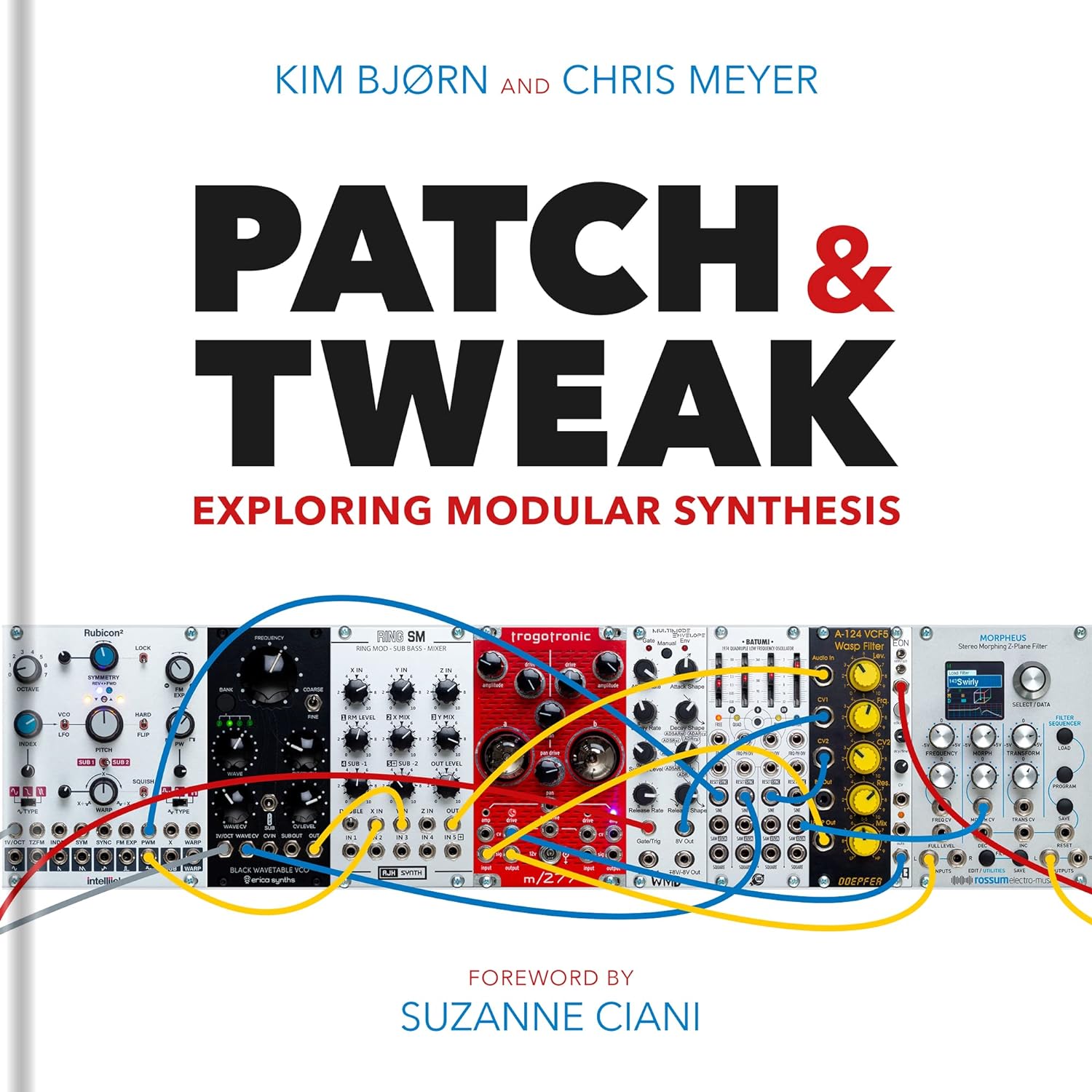
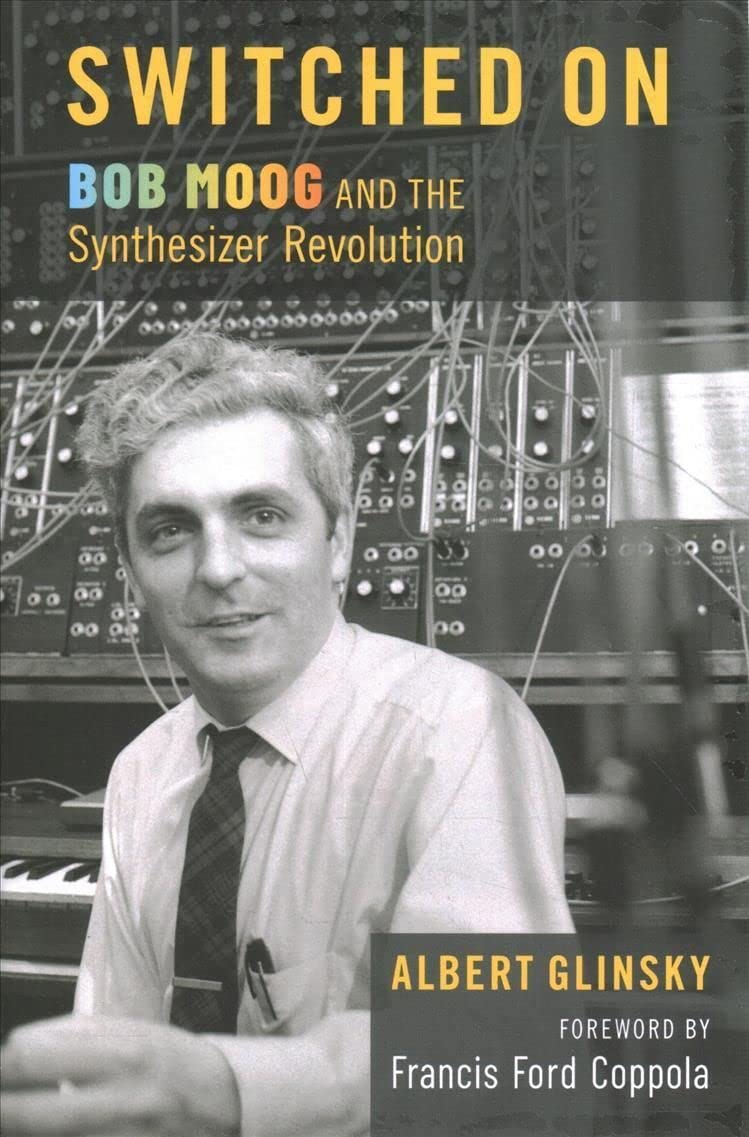
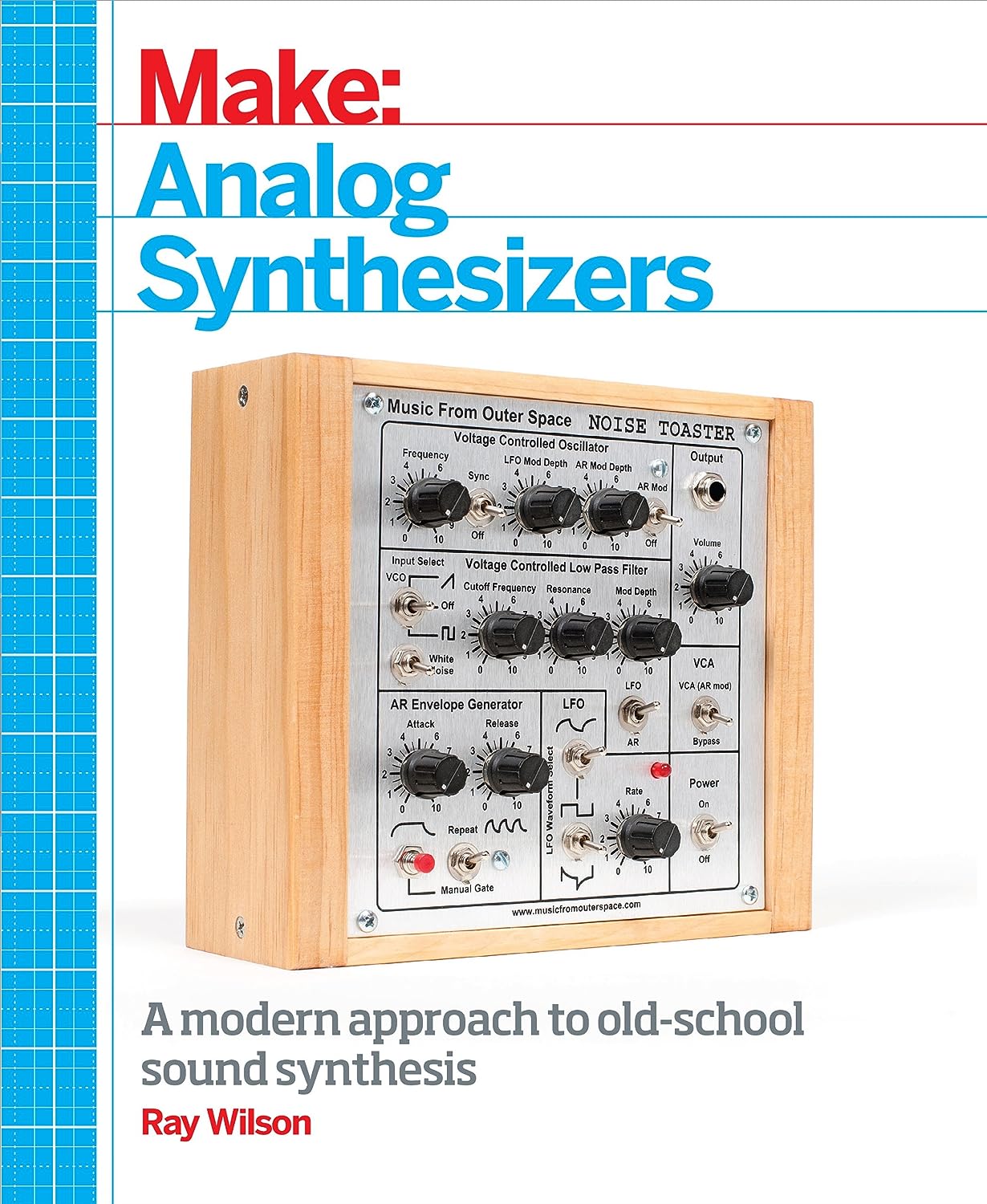
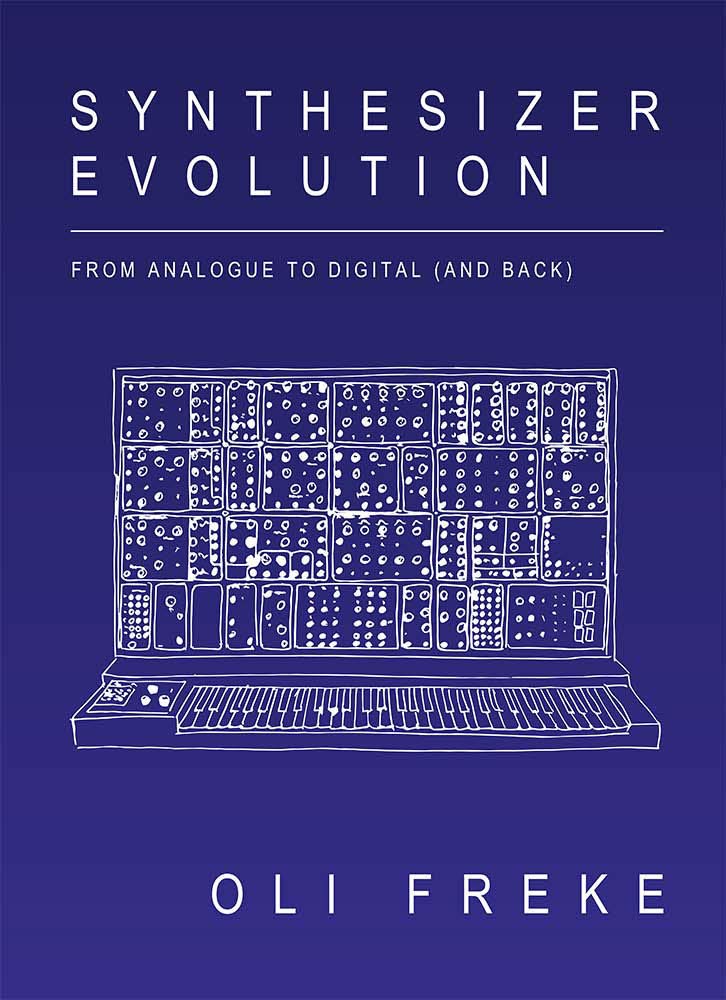

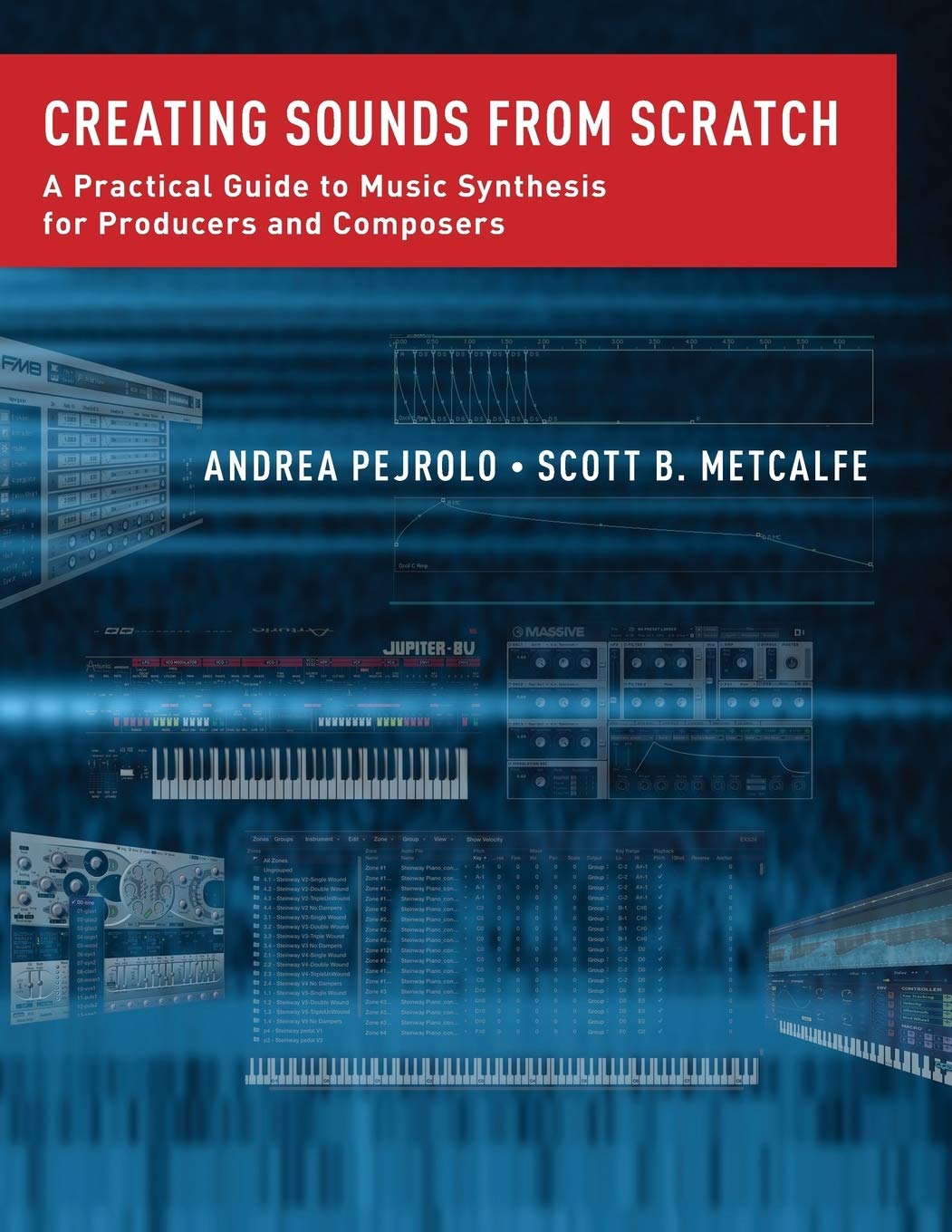


© Matrixsynth - All posts are presented here for informative, historical and educative purposes as applicable within fair use.
MATRIXSYNTH is supported by affiliate links that use cookies to track clickthroughs and sales. See the privacy policy for details.
MATRIXSYNTH - EVERYTHING SYNTH













© Matrixsynth - All posts are presented here for informative, historical and educative purposes as applicable within fair use.
MATRIXSYNTH is supported by affiliate links that use cookies to track clickthroughs and sales. See the privacy policy for details.
MATRIXSYNTH - EVERYTHING SYNTH





















